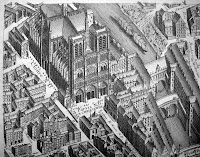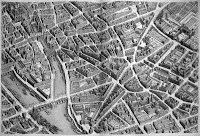 200 years ago, on April 23, 1810, Levi Newcomb of the Class of 1810, died in Hanover just a few months before his anticipated graduation. Fellow members of the Society of Social Friends, one of two literary societies active at the College at the time, engaged the Risley family of stone cutters to create Newcomb's gravestone, based upon this design. The marble stone as executed by the Risley's varies somewhat from the drawing, and can still be seen in the Dartmouth Cemetery.
200 years ago, on April 23, 1810, Levi Newcomb of the Class of 1810, died in Hanover just a few months before his anticipated graduation. Fellow members of the Society of Social Friends, one of two literary societies active at the College at the time, engaged the Risley family of stone cutters to create Newcomb's gravestone, based upon this design. The marble stone as executed by the Risley's varies somewhat from the drawing, and can still be seen in the Dartmouth Cemetery. The Risley papers document only three student stones, but the family produced gravestones for Dartmouth faculty members, many Hanover residents, and in 1810 were contracted to carve replacement table stones for Dartmouth founder Eleazar Wheelock and his wife Mary. Although there are only a few design drawings within the papers, they do contain deeds, orders, receipts, business correspondence and almost 175 epitaphs, providing an unusual insight into early New England gravestone carving practices and production.
As for the Newcomb family, Levi's father was the Hon. Daniel Newcomb, Harvard 1768, who also sent his elder son to Dartmouth. Henry Newcomb, Class of 1807, joined the U.S. Navy after graduation and died in 1825 when the ship bringing him home on furlough, the brig Helen, foundered and all but one of the crew perished.
The original drawing for Newcomb's gravestone can be found in the Papers of the Risley Family, MS-235 and is discussed in Margaret Moody Stier's "'Wonderfully Lettered and Carved': The Gravestones of the Risley Family, 1786-1835," Dartmouth College Library Bulletin, April 1983.

